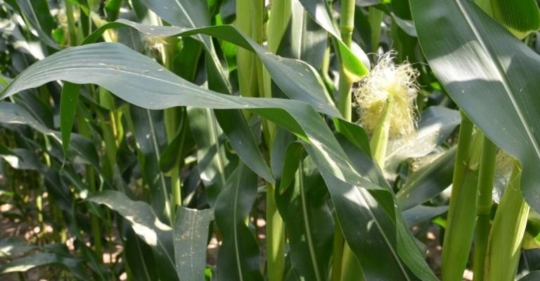Explore our blog featuring articles about farming and irrigation tips and tricks!
Turn Sunlight Into More Crops

By: Kansas Farmer
I approached an intersection where a new stop sign was installed and had no trouble spotting it. The octagon shape was outlined in tiny red flashing lights. I noticed a small solar collector behind the sign, powering the lights. Whoever invented these simple solar cells might have been inspired by watching corn plants on a sunny day. They don’t display flashing lights, but they capture sunlight and use it to power the “factory” inside the plant.
Scientists at Corteva Agriscience reason that if these natural solar collectors were more efficient at what they do — capturing and converting sunlight into different forms of energy — crop yields might go up. Corteva joined forces with ZeaKal Inc. to make that logic reality. ZeaKal, a company you likely haven’t heard much about, has proprietary rights to PhotoSeed tech. It uses a novel mechanism to increase a plant’s intrinsic photosynthetic capacity.
ZeaKal spokespeople say PhotoSeed plants harvest more sunlight, fix more carbon dioxide and produce more grain. The grain is often higher in protein and oil content.
News flash! Fungus coming!
Damon Smith may be a scientist, but he likes the seemingly old-fashioned “cuppa coffee” approach. “If you can sit in the morning with your cup of coffee and get a forecast for disease, then we were successful,” says Smith, a plant pathologist at the University of Wisconsin-Madison.
What he and colleagues have developed is hardly old-fashioned. It’s a smartphone app that uses current weather information and knowledge about specific diseases to forecast when spraying might be warranted. Sporecaster received 250 calls daily during the white mold season in soybeans in 2018.
Stay up to date on all T-L news and get alerts on special pricing!


